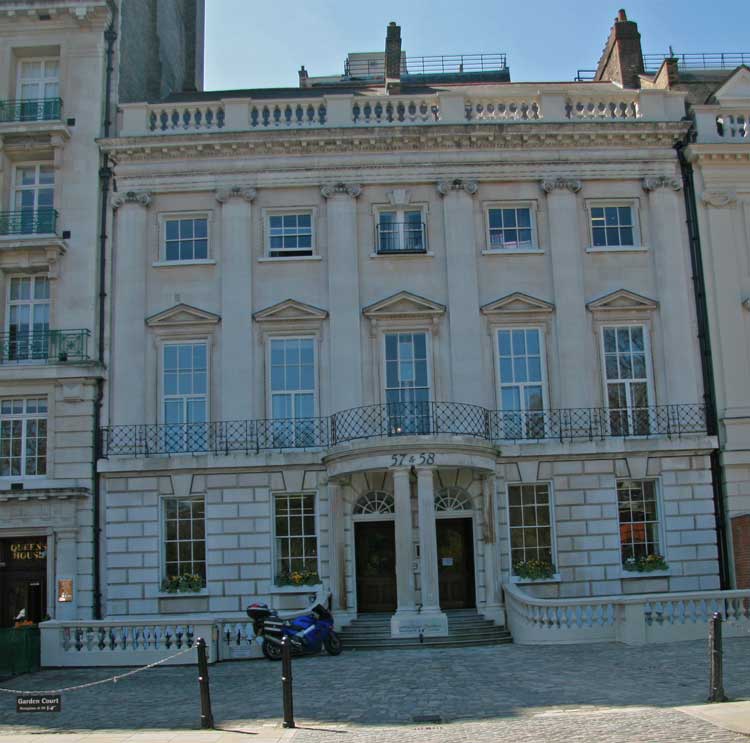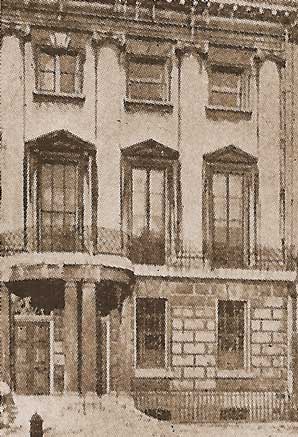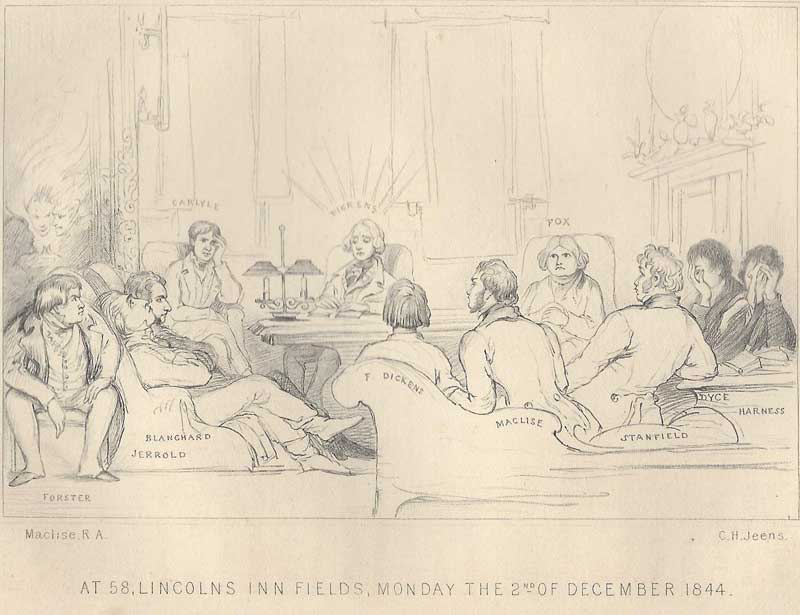
The original property on the site of what is now 57 to 58 Lincoln's Inn Fields, was built around 1640 by Sir Edward Bellingham (1567 - 1640), albeit his delight in his newly erected mansion was to prove short lived, since he died not long after its completion.
In 1664, it came into the possession of Edward Montagu, first Earl of Sandwich (1625 - 1672).
Despite being a fervent follower of Oliver Cromwell during the years of the Commonwealth - in fact, such was his level of loyalty that he was one of a group of supporters that became known as "the kinglings", on account of their urging Cromwell to proclaim himself King - Montagu was pragmatic enough to see that the best way out of the chaos that followed Cromwell's demise in 1658 was the return of the monarchy.
As head of the Navy, he was ideally placed to make discreet contact with the exiled Charles II, and bring him back to England in order to facilitate the Restoration of the Monarchy in May 1660.
Charles rewarded him by creating him Baron Montagu of St Neots, Viscount Hinchingbrooke, and Earl of Sandwich on 12th July 1660.
His Secretary at the Navy was none other than Samuel Pepys (1633 - 1703), the diarist, who recorded a visit he paid to the Earl's new Lincoln's Inn Fields abode in his diary entry for January 20th, 1664 - albeit it is evident that Pepys considered the annual rent of £250, to be somewhat excessive.
Pepys's diary entry noted:-
"I up, and by coach to my Lord Sandwich, to his new house, a fine house, but deadly dear, in Lincoln's Inn Fields."
Pepys would make several return visits during the tenure of the Earl and, after Sandwich was sent as Ambassador to Spain, during the subsequent tenure here of Sir George Cateret (1610 - 1680).
On 25th September, 1667, he recorded in his diary:-
"At noon I took coach, and to Sir G. Carteret's in Lincoln's Inn Fields, to the house that is my Lord's (i.e., Lord Sandwich), which my Lord lets him have, and this is the first day of dining there."
On 29th September 1668, Pepys records that he took supper at "my lady Carteret's" at which the King and Queen were present.
The house then passed through several ownerships before, in 1730, it was purchased by the then Solicitor General Sir Charles Talbot (1685 – 1737), for the princely sum of £3,000.
In 1733 Talbot became Lord Chancellor and, to mark this appointment, he had the house rebuilt, a project that caused one commentator to lament that:-
"...the alterations which have been made in it are very far from improving it, and what it has gained in height it has lost in proportion, and what is added of decoration is deviating from simplicity and beauty; the height of the roof is a blemish that the lowness of the wall and portal will hardly atone for.
On the 14th February, 1737, Talbot died at the house.
In 1797 Sir John Soane (1753 – 1837) divided the house into two houses, and added a new semi-circular entrance, with four graceful Doric columns.

By the 1830's, Number 58 was divided into residential chambers and, between 1834 and 18656, John Forster (1812 - 1876) - best friend and primary biographer of Charles Dickens (1812 - 1870) - lived here.
Dickens was a regular visitor to the property, and in early December, 1844, Dickens made a special journey here from Italy, where he had been living for most of that year, to treat Forster and a gathering of friends and colleagues, to a reading from his newest Christmas book, The Chimes.
In various letters, written on his journey back, Dickens had kept Forster appraised of his progress through Europe and, in his final missive, had told how he had sledged through the snow in the midst of prodigious cold.
Dickens had intended to arrive on Sunday 1st of December, 1844, but he made such good progress that he arrived a day early.
In his The Life Of Charles Dickens, published after the author's death, Forster recalled their reunion on the night of Saturday 30th November, 1844:-
"There was certainly no want of animation when we met. I have but to write the words to bring back the eager face and figure, as they flashed upon me this wintry Saturday night that almost before I could be conscious of his presence I felt the grasp of his hand. It is almost all I find it possible to remember of the brief, bright meeting. Hardly did he seem to have come when he was gone."
Forster went on to recall how Dickens achieved all he had wanted to from his all too brief visit to London, and how he gave a reading from The Chimes in the front, first floor room of 58 Lincoln's Inn Fields:-
"He saw his little book in its final form for publication; and to a select few brought together on Monday the second of December at my house, had the opportunity of reading it aloud...An occasion rather memorable...but of which no detail beyond the fact remains in my memory, and all are now dead who were present at it excepting only Mr. Carlyle and myself."
The reading given here in 1844 was such a success that it inspired Dickens to later go on a series of exhausting, but highly lucrative, public reading tours that took him all over Britain and, in 1867, to America as well.
As Forster put it:-
"[In this reading] was the germ of those readings to larger audiences by which, as much as by his books, the world knew him in his later life..."
Present at the reading was the artist Daniel Maclise (1806 - 1870) who, aas Forster put it, "made a note of it in pencil."
Maclise's sketch of the the reading shows Dickens, surrounded by his enraptured audience, halo-like beams emanating from him.
Forster considered Maclise's sketch to be an accurate rerecord of the proceedings, albeit id observe that it did possess "a touch of caricature to which I may claim to be considered myself as the chief victim..."
You can judge for yourself whether Forster was the victim of a caricature - that's him in the left corner of the Maclise sketch.

Forster later recalled how, when Dickens had headed back to Italy, he wrote to him to express his grief that he had "had so tempestuous a journey for such brief enjoyment."
Dickens, however, was not in the least bit put out and replied that the visit "had been one of happiness and delight" to him, adding:-
"I would not recall and inch of the way to or from you, if it had been twenty times as long and twenty thousand times as wintry...I swear I wouldn't have missed that week, that first night of our meeting, that one evening of the reading at your rooms...for any easily stated or conceived consideration."
Daniel Maclise wrote to Dickens' wife Catherine, who had remained with their children in Italy, to appraise her of her husband's triumph:-
"There was not a dry eye in the house. Shrieks of laughter - there were indeed - and floods of tears as a relief to them - I do not think that there ever was such a triumphant hour for Charles."
Eight years after his "triumphant" reading Dickens would return to the house in his fiction and use it as the residence of the sinister lawyer Mr Tulkinghorn, Sir Leicester Deadlock's legal advisor and the ruthless pursuer after the redoubtable Lady Deadlock's secret.
Dickens is at is descriptive best when he introduces us to the building in Bleak House:_
"The crow flies straight across Chancery Lane and Lincoln's Inn Garden, into Lincoln's Inn Fields.
Here, in a large house, formerly a house of state, lives Mr Tulkinghorn. It is let off in sets of chambers now; and in those shrunken fragments of its greatness, lawyers lie like maggots in nuts. But its roomy staircases, passages, and antechambers, still remain; and even its painted ceilings, where Allegory, in Roman helmet and celestial linen, sprawls among balustrades and pillars, flowers, clouds, and big-legged boys, and makes the head ache — as would seem to be Allegory's object always, more or less. Here, among his many boxes labelled with transcendent names, lives Mr Tulkinghorn, when not speechlessly at home in country-houses where the great ones of the earth are bored to death. Here he is today, quiet at his table. An oyster of the old school whom nobody can open.
Like as he is to look at, so is his apartment in the dusk of the present afternoon. Rusty, out of date, withdrawing from attention, able to afford it. Heavy, broad-backed, old-fashioned mahogany and horse-hair chairs, not easily lifted, obsolete tables with spindle-legs and dusty baize covers, presentation prints of the holders of great titles in the last generation, or the last but one, environ him. A thick and dingy Turkey-carpet muffles the floor where he sits, attended by two candles in old-fashioned silver candlesticks, that give a very insufficient light to his large room. The titles on the backs of his books have retired into the binding; everything that can have a lock has got one; no key is visible. Very few loose papers are about. He has some manuscript near him, but is not referring to it. With the round top of an inkstand and two broken bits of sealing-wax, he is silently and slowly working out whatever train of indecision is in his mind. Now, the inkstand top is in the middle: now, the red bit of sealing-wax, now the black bit. That's not it. Mr Tulkinghorn must gather them all up, and begin again.
Here, beneath the painted ceiling, with foreshortened Allegory staring down at his intrusion as if it meant to swoop upon him, and he cutting it dead, Mr Tulkinghorn has at once his house and office. He keeps no staff; only one middle-aged man, usually a little out at elbows, who sits in a high pew in the hall, and is rarely overburdened with business. Mr Tulkinghorn is not in a common way. He wants no clerks. He is a great reservoir of confidences, not to be so tapped. His clients want him; he is all in all. Drafts that he requires to be drawn, are drawn by special-pleaders in the Temple on mysterious instructions; fair copies that he requires to be made, are made at the stationers’, expense being no consideration. The middle-aged man in the Pew, knows scarcely more of the affairs of the Peerage, than any crossing-sweeper in Holborn.
The red bit, the black bit, the inkstand top, the other inkstand top, the little sand-box. So! You to the middle, you to the right, you to the left. This train of indecision must surely be worked out now or never. - Now! Mr Tulkinghorn gets up, adjusts his spectacles, puts on his hat, puts the manuscript in his pocket, goes out, tells the middle-aged man out at elbows, "I shall be back presently." Very rarely tells him anything more explicit..."
I have to be honest, I've gazed upon this old house for nigh on forty years on an almost weekly basis, and I have never grown tired of it.
Standing on the pavement and looking up at its time-besmeared walls, I still find myself overwhelmed by the magic that, in my mind at least, its associations with Dickens have imbued it with.
I like to picture Dickens turning up here at all times of the day or night - he really was no respecter of other peoples domesticity - to seek Forster's advice or opinion; or to persuade him to head off on a mammoth ramble across London.
The image of him in that first floor room holding his audience spellbound, as he read The Chimes aloud to them, really does send chills down my spine - and, I have to say, there is just something so very, very special about the building.
Indeed, I don't care where you have lived or what you have seen; you never in all your life saw anything approaching 57 and 58 Lincoln's Inn Fields; and, as you stand and picture that long ago December afternoon in 1844, I hope that the bells will chime for nothing but joy.